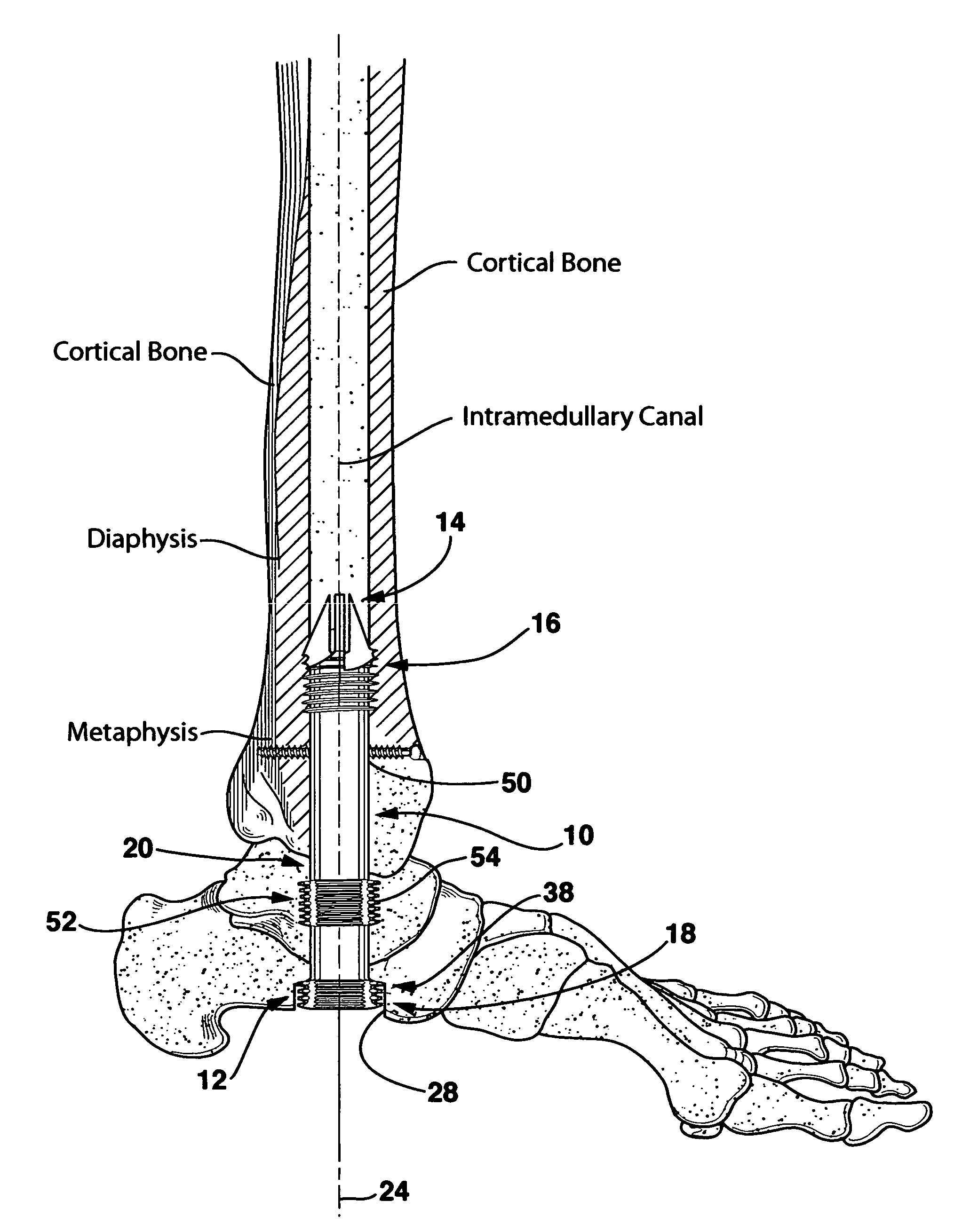Intramedullary locked compression screw for stabilization and union of complex ankle and subtalar deformities
a technology of intramedullary locking and compression screw, which is applied in the field of intramedullary locking compression screw for stabilizing and union of complex ankle and subtalar deformities, can solve the problems of defective cartilage in the ankle, complex joint of the ankle, and a lot of stress and pounding
- Summary
- Abstract
- Description
- Claims
- Application Information
AI Technical Summary
Benefits of technology
Problems solved by technology
Method used
Image
Examples
Embodiment Construction
[0039]In order that the invention may be clearly understood and readily carried into effect, preferred embodiments of the invention will now be described, by way of example only and not to limit the invention, with reference to the accompanying drawings. The intramedullary ankle fusion device of the present invention is shown in the drawings generally labeled 10.
[0040]The ankle fusion device 10 is a preferred embodiment shown in FIGS. 3-8 is a double threaded cannula having a proximal end 12, an opposite distal end 14, a tibial component 16 at the distal end 14, a calcaneus component 18 at the proximal end 12 and a midsection 20 extending between the tibial component 16 and the calcaneus component 18.
[0041]Because the ankle fusion device 10 is a cannula, the ankle fusion device 10 has a lumen 22 (FIG. 5 and shown in phantom in FIGS. 4 and 10) extending along a midline 24 of the ankle fusion device 10 from the proximal end 12 to the distal end 14.
[0042]The tibial component 16 include...
PUM
 Login to View More
Login to View More Abstract
Description
Claims
Application Information
 Login to View More
Login to View More - R&D
- Intellectual Property
- Life Sciences
- Materials
- Tech Scout
- Unparalleled Data Quality
- Higher Quality Content
- 60% Fewer Hallucinations
Browse by: Latest US Patents, China's latest patents, Technical Efficacy Thesaurus, Application Domain, Technology Topic, Popular Technical Reports.
© 2025 PatSnap. All rights reserved.Legal|Privacy policy|Modern Slavery Act Transparency Statement|Sitemap|About US| Contact US: help@patsnap.com



